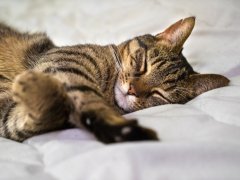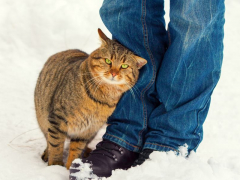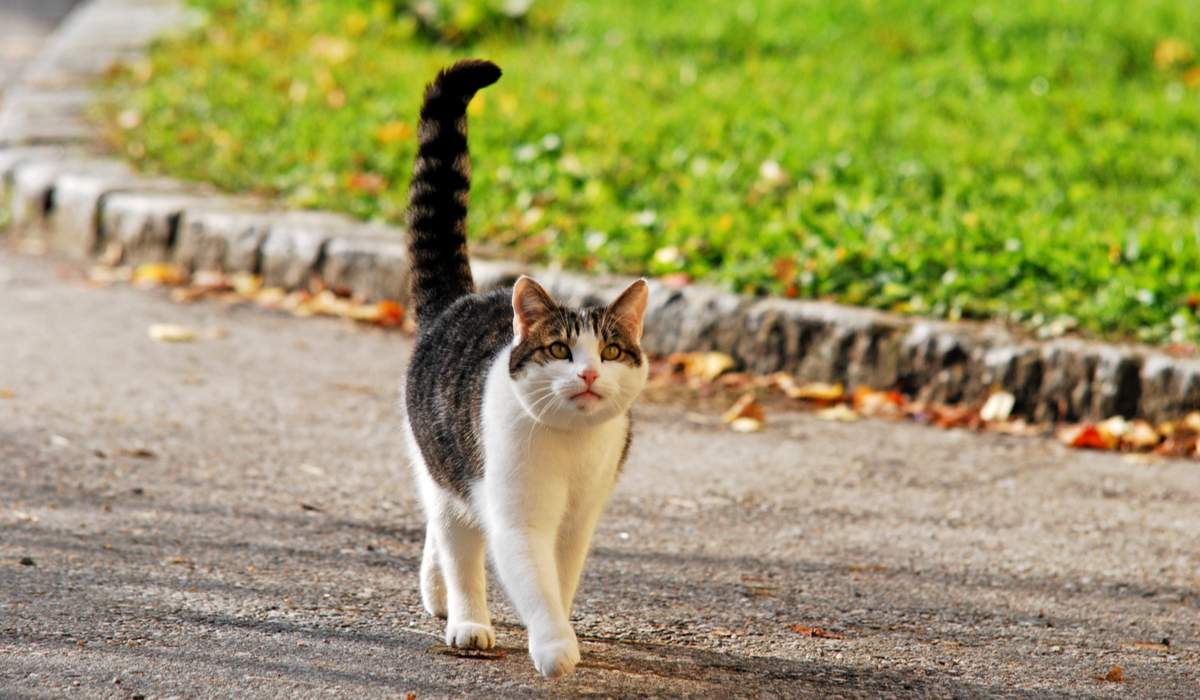
When a cat’s tail shakes or quivers, it indicates a few different meanings depending on other body signals. Cats are the masters of subtle communication. Whether you see slow blinks, flattened ears, dilated pupils, or a wagging tail, when it comes to cats, you have to pay close attention to understand what they are communicating.
In fact, a cat’s tail is an important part of feline body language. The tail puffs up when the cat is scared or angry, twitches at the tip when they are stalking prey, and stands up straight when they are feeling friendly. But how about when a cat’s tail shakes or quivers? Let’s dive into the possible meanings of this peculiar body language now.
When a cat's tail shakes or quivers, it can mean a number of things, depending on the situation. Cats use their tails a lot when it comes to communicating how they are feeling. Learning to read your cat's body language will help you understand what they are trying to communicate.Key Takeaways
Cat Body Language
Cats communicate in a variety of ways, including vocalizations such as hissing or growling, scent cues through urination and pheromones, and body language. Body language includes posture and facial expressions. These are important forms of communication for cats, and being able to read their mood by looking at their posture and non-verbal cues is helpful for cat owners.
The tail conveys emotions, as do the eyes, ears, fur, and body posture. Cats express a large range of emotions with these, such as happiness, anxiety, aggression, pain, and playfulness.
Here are some common examples of cat body language.
1. Tail Position
The tail can provide insight into what your cat is thinking. Usually, if the tail is held up and perpendicular to the ground, this signals friendly curiosity toward whatever they are approaching. Their posture is usually relaxed, and their ears are pricked up.
In contrast, a thrashing tail from side to side, or a “bushy” tail where the hair is all standing on end, is extremely negative and possibly a precursor to aggressive behavior. If the tail is tucked between the legs, this indicates nervousness or submissive behavior.
2. Facial Expressions
The movement of your cat’s eyes, ears, and mouth can also be very telling when it comes to the mood your cat is in. Relaxed cats have normal eye positions and ears facing forward in their usual position. An angry cat will have erect and outwardly facing ears, with narrowed eyes. Ears flattened down against the head and large, dilated pupils are signs of a fearful cat.
3. Eye Contact
Along with eye position, the level of eye contact your cat is holding is also important. When a cat stares without blinking, it is a challenging and confrontational sign. A relaxed stare with plenty of slow blinking is friendly and implies a good level of comfort and relaxation.
4. Body Posture
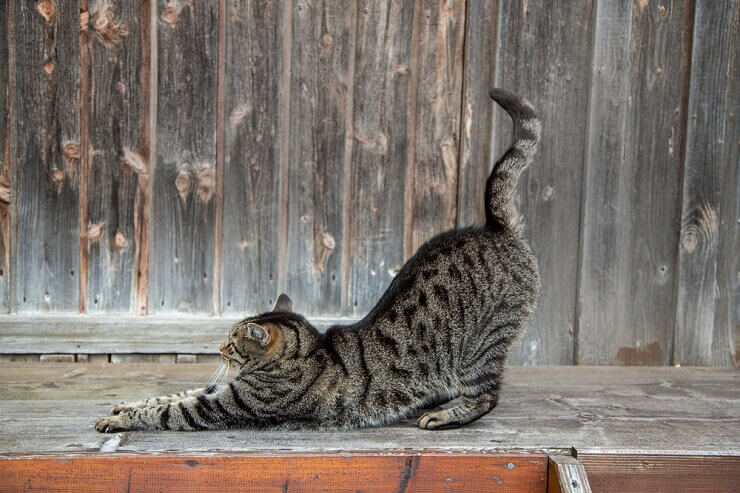
A fully stretched-out body is a sign that your cat is feeling comfortable and at ease.
Cats have a very classic posture when they are feeling defensive: getting down low to the ground, with an arched back and tail beating on the ground. When cats are fully stretched out, they are relaxed and comfortable. However, if the cat is crouching with stretched body and tense posture this can indicate readiness to pounce, usually during hunting or play.
What Does It Mean When a Cat’s Tail Shakes or Quivers?
As we have learned, the tail is a very important communicator of a cat’s mood and intentions. So, what does it actually mean when a cat’s tail shakes or quivers? Well, it can mean a variety of things, depending on the context and other cues. Here are the common reasons:
1. When a Cat’s Tail Shakes or Quivers Toward a Human
If you come home after a long day at work to find your cat coming toward you with their tail upright and quivering, then we have good news; your cat is pleased to see you home and is giving you a friendly greeting. You’ll also likely see this when a new pack of cat treats is opened.
On the other hand, if you are petting or playing with your cat, and they start to shake the upper part of their tail, you might want to give your kitty a rest. A shaking tail often indicates irritability or anxiety, especially if this progresses to a fluffed-up or thrashing tail. This tail language screams “Leave me alone!” and serves as a warning before aggression.
2. When a Cat’s Tail Shakes or Quivers Toward Another Cat
Your cat’s tail signals toward other cats are similar to those toward humans. A straight-up, quivering tail indicates curiosity and a friendly greeting. A twitching tail tip implies vigilance or insecurity, and a thrashing tail is bad news that indicates anger or aggression.
3. When a Cat’s Tail Shakes or Quivers While Urinating
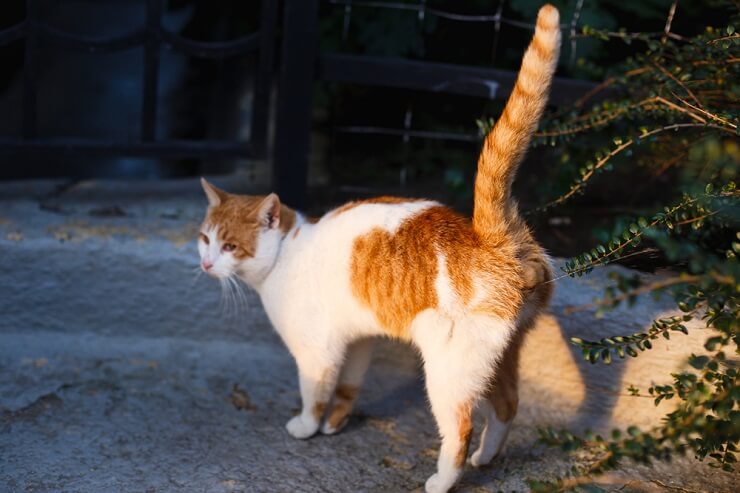
Cats tend to hold their tail up straight and twitch them when they are spraying.
Typically, cats squat to urinate on a horizontal surface if they are urinating to void their bladder. However, if they are urine spraying, they will stand, with their back end against a vertical surface and their tail will quiver as they spray a small amount of urine backward.
Also Read: 8 Tips To Stop A Cat From Spraying
Urine spraying is a normal behavior in cats. It is a form of scent communication, most often used to mark out territory boundaries. If you have seen your cat spraying outside, this is perfectly fine. However, if your cat has started urine spraying inside, you may be less pleased with this development!
If your cat is showing classic urine spraying behavior (standing, with tail quivering, passing a small amount of urine onto a vertical surface), here are some common reasons why:
- Pain or discomfort: Cats with urinary problems such as urinary tract infections often change from their usual squatting posture and instead urinate standing up, which is commonly confused with spraying. This is why a check-up at the veterinarian to rule out urinary disease is a good first step if you see your cat spraying.
- Territorial disputes: If you have more than one cat, there may be some squabbling over their territories, and you may find they spray urine to try and warn each other away. To help mitigate this, give each cat their own food bowl, water bowl, litter box, toys, and bed placed in a safe space for each cat. This will help to lessen the competition.
- Stress: If something is making your cat anxious, such as building work, firework displays, or a new baby, they may start to urine spray. This is because they are leaving scent signals to themselves to reassure themselves of their safe spaces. In this case, provide plenty of hiding spaces and a pheromone diffuser to help to calm them.
Final Thoughts
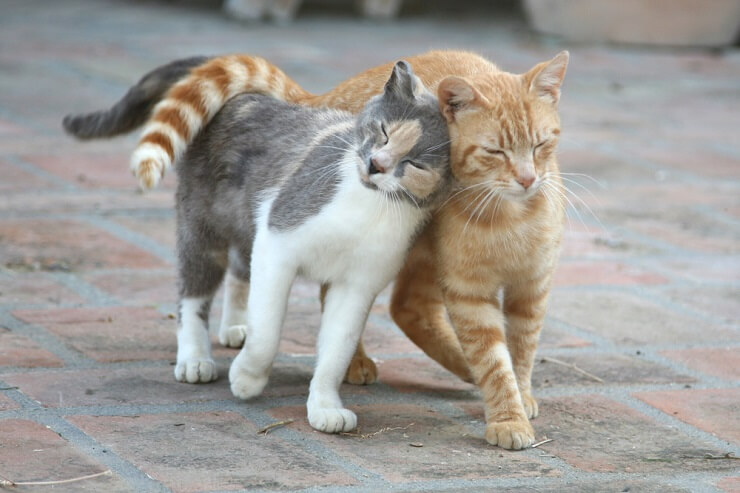
Learning your cat’s body language can make living with them more fulfilling and harmonious, strengthening the bond that you share.
Cats’ tails are an insight into their mood and behaviors. A quivering tail can be good or bad, depending on the context. Learn to read your cat’s body language to better understand them, and to ensure that you are meeting all of your pet’s needs.
Frequently Asked Questions
Is it normal for a cat’s tail to shake?
Yes. Cats use their tails, along with other body parts and their posture, to communicate. A shaking tail can indicate anything from aggression to a friendly greeting.
Why does my cat’s tail quiver when I talk to him?
Cats love attention, and an upright quivering tail as you interact with them indicates pleasure and a friendly response to your chatting.
What does a quivering cat tail mean?
It can mean a few things depending on the context. If your cat's tail quivers as they approach you, this is a friendly greeting. A swishing tail can mean irritability, however. A quivering tail while urinating indicates your cat is urine spraying as a form of scent communication.


